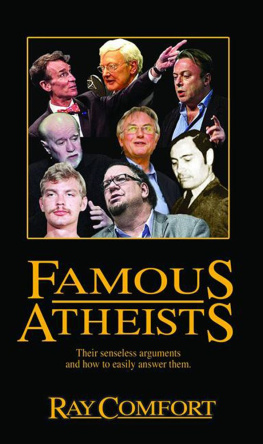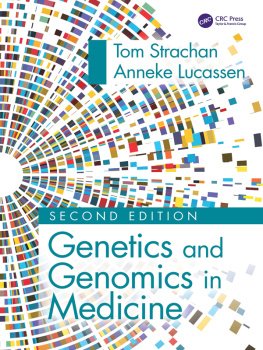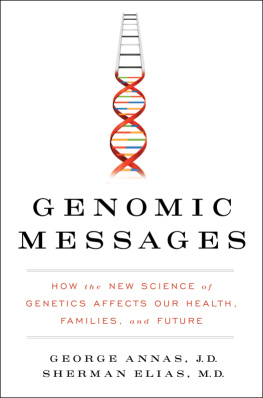


Published with assistance from the foundation established in memory of Philip Hamilton McMillan of the Class of 1894, Yale College.
Copyright 2012 by Nathaniel Comfort.
All rights reserved.
This book may not be reproduced, in whole or in part, including illustrations, in any form (beyond that copying permitted by Sections 107 and 108 of the U.S. Copyright Law and except by reviewers for the public press), without written permission from the publishers.
Yale University Press books may be purchased in quantity for educational, business, or promotional use. For information, please e-mail (U.K. office).
Designed by James J. Johnson.
Set in Scala type by IDS Infotech Ltd., Chandigarh, India.
Printed in the United States of America.
Library of Congress Cataloging-in-Publication Data
Comfort, Nathaniel C.
The science of human perfection : how genes became the heart of American medicine / Nathaniel Comfort.
p. cm.
Includes bibliographical references and index.
ISBN 978-0-300-16991-1 (cloth : alk. paper)
I. Title.
[DNLM: 1. Genetics, MedicalhistoryUnited States. 2. EugenicshistoryUnited States. 3. HereditygeneticsUnited States. 4. History, 20th CenturyUnited States. 5. History, 21st CenturyUnited States. QZ 11 AA1.]
616'.042dc23
2012005081
A catalogue record for this book is available from the British Library.
This paper meets the requirements of ANSI/NISO Z39.481992 (Permanence of Paper).
10 9 8 7 6 5 4 3 2 1
None of us can throw stones, for we are all mutants together
Hermann Joseph Muller
CONTENTS
PREFACE
THIS IS A HISTORY OF PROMISES . Scientists, physicians, and reporters tell us that DNA science will enable us to live longer and to know when we will die. We will predict the diseases we will get and forestall them with drugs or lifestyle changes. Medicine will become personalized: our doctor will know us literally outside and in, and so will be able to tailor medical care to our individual needs. We will know whether we are idiosyncratically sensitive or insensitive to a drug and whether that drug will be beneficial, inert, or toxic to us. Medicine will become a predictive, preventive science. We will simultaneously receive better care and have more control over and autonomy in our healthcare decisions. Ultimately, we will be able to engineer ourselves to eliminate disease, disability, and weakness, and we will guide our own evolution.
Although these promises have a glossy contemporary shine, they are recycled. Medicine has been going geneticand genetics going medicalfor more than a century. The claims and promises of genetic medicine predate DNA, the mapping of human genes to chromosomes, even genes themselves. It is not my task to evaluate whether these promises are realistic or can be kept. My goal is to uncover their origins, to illuminate their context, and to explain their meaning.
Medical geneticsor, more broadly, medical heredityhas always stemmed from two impulses: toward the relief of suffering and toward human improvement. The first is compassionate, medical, individual; to oppose it is misanthropic. The second is more complex. In the abstract, human improvement may be a laudatory goal, but hereditary human improvement denotes changing the nature of the population. It carries suggestions of human engineering, and of the objectification of the engineered. It is fashionable but disingenuous these days to assert that the relief of individual suffering is noble and population improvement insidious. Both are in fact both. Relief of suffering is humanitarian but raises issues of paternalism and autonomy. Deliberate efforts at human improvement may have the population's best interests at heart, but willy-nilly they involve social control.
The history of medical genetics is usually related as part of the larger history of human genetics. Over the years, a master narrative of human genetics has crystallized, in which the study of human heredity evolves from a focus on human improvement to one on relief of suffering. Medical genetics emerges out of this medical turn in human genetics, which occurred at the mid-twentieth century, in the years following the Second World War. This narrative allows one to acknowledge the distasteful origins of human genetics in eugenicsoften defined in the words of the Progressive-era geneticist Charles Davenport as the science of human improvement through better breedingwhile distancing oneself from it. The eugenic origins of human genetics are sequestered in the past, separated from modern medical human genetics by the historical firewall of World War II. Historians of eugenics have nuanced and deepened this narrative of a medical turn in human genetics, but they have largely retained its architecture. Years of scholarship have transformed the firewall into a membrane, multiply pierced with postwar eugenic practices and affiliations. Such work adds needed context, reflectiveness, and conscience to the often overamplified discussions of the promise of scientific medicine. Yet even with all this welcome texture, eugenics still tends to be construed as a bad idea, even a pseudoscience, that has an insidious tendency to leak back into legitimate attempts to understand the hereditary basis of health and temperament. Eugenics is treated as exceptional, a scientific/social/political movement bound in time, an unfortunate phase in the history of human genetics. There remains in much of the scholarly discussion a sense that eugenics is a contaminant of good, honest biomedicine.
In contrast, in this book I treat human improvement and the relief of suffering as the two goals of all eugenicsand all medical genetics. Where previous accounts have documented the medical turn in human genetics, I trace, rather, a thin medical thread in studies of human heredity. It reaches back to the beginning of the twentieth century, gradually thickens, and comes to dominate scientific approaches to human heredity. Even at the beginning of the century, advocates of hereditary health made promises identical to those we hear today: genetics would make us healthier, longer-lived, smarter, happierbetter. These goals were eugenic goals. I am interested less in the eugenics movement, which is historically situated in the Progressive era and interwar period, than in the eugenic impulse, which is timeless. It is the urge toward selection of the best offspring possible, toward the elimination of hereditary disease, and toward human engineeringthe self-direction of human evolution, as one Progressive-era poster put it. By focusing on the medical dimension of human heredity, we can see that these are constants in the history of biomedicine. Those constants find new expression in each era of our history. They have to be understood in their own context. This perspective dissolves the sense of inevitability and progression from our narrative of medical genetics and breaks our preoccupation with state control. Contemporary genetic medicine is not the fulfillment or completion of the science's promise but rather another stage in the evolution of a field that cannot exist outside of a social and cultural context.
I follow a small, evolving community of American scientists and doctors through the twentieth century, from the first stirrings of Mendelian genetics after 1900, through the building of a profession of human genetics around midcentury, up to the science-fiction achievements of recent biotechnology and the Human Genome Project. They are a diverse group of eugenicists, psychologists, geneticists, zoologists, physicians, statisticians, and public health workers. Many of these men and women will be unfamiliar even to scholars in the field; few are household names. I have traced their stories and contributions through their published work, both technical and popular; by reading their mail, memoranda, and other archival documents, as well as newspaper and magazine articles, biographies, and obituaries; and, for the more recent figures, by talking to them and those who knew them. Though their values and skills were diverse, they shared the belief that they could and should use their knowledge of heredity for the benefit of individuals, families, and society. They sought to integrate the science of heredity with the humanitarian aims of public health and medicine. A utopian spirit pervades their words and work. Heredity, they believedand believeis the foundation of human identity. Understanding it, manipulating it, controlling it can improve our lives.
Next page












